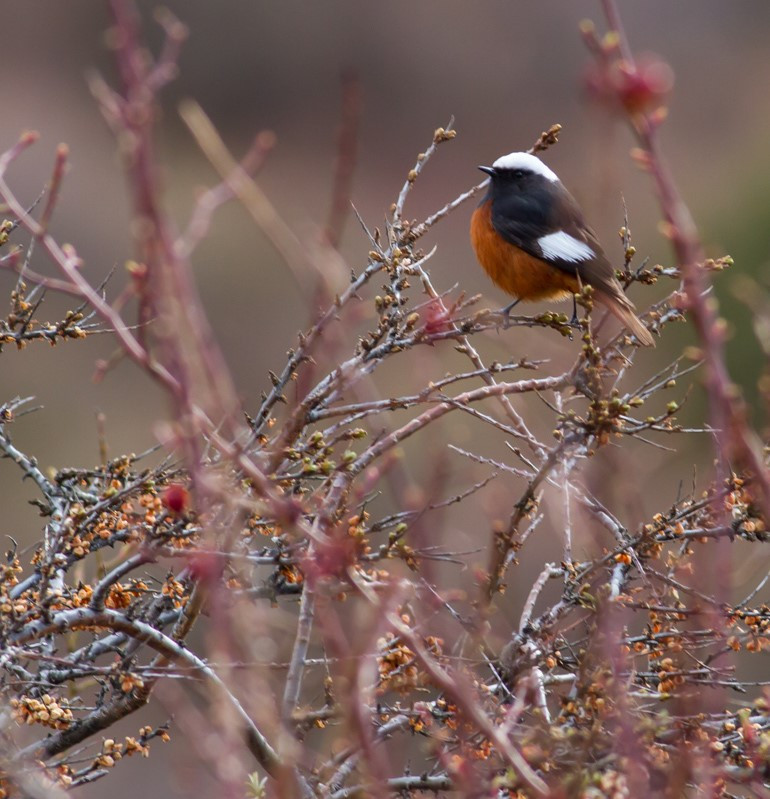Opis
The high-mountain villages of Khinalig and Laza were previously too remote to visit. Greater accessibility has placed them firmly on the tourist map in recent years. Located at 2,300m, Khinalig boasts an incredible hilltop location, unique stone houses, inhabitants who speak one of the world’s rarest languages and even a Zoroastrian fire temple. Moreover, the sparsely vegetated terrain around Khinalig is home to birds like Caucasian Snowcock, swistunka kaukaska, White-winged Redstart, orłosęp, pomurnik, kulczyk królewski, orzeł przedni, kuropatwa, śnieżka, płochacz halny, nagórnik, górniczek, sęp kasztanowaty and sęp płowy
Laza is no less scenic, situated at 1300m surrounded by emerald-green slopes. The locals are Lezgi, another of Azerbaijan’s ethnic minorities, and in the area around the village you can look for such key species as Cietrzew kaukaski, dziwonia, Mountain Chiffchaff (Caucasian), among other high alpine species.
Szczegóły
Dostęp
When to visit: Late spring and summer, best in mid-May to mid-June. Also a winter visit, if the snow level permits and roads are open, is very scenic but many of the target species are migrants and will have left. Both Khinalig and Laza are fantastic places to go hiking in the Greater Caucasus Mountains, where a number of marked routes link rustic villages. Khinalig-Galakhudat and Laza-Shahdag are popular options. Laza is located very near the luxury Shahdag Mountain Resort with great skiing from late December to late March, plus relaxing spas and adventurous outdoor activities in summer. In Guba, Red Village is the last fully Mountain Jewish village in the Caucasus and hosts a great new museum where you can discover their history and culture. Meanwhile, golfers can also enjoy a round at the picture-perfect National Azerbaijan Golf Club, about 10km from Guba city.
Teren i siedlisko
Góry , Step , Jezioro , Rolnictwo/uprawy , Łąka , Rzadkie drzewa i krzewyWarunki
Górzysty , Pagórkowaty , Otwarty krajobrazTrasa dookoła
TakCzy luneta będzie przydatna ?
Może być przydatnaUdany sezon obserwacyjny
Wiosna , LatoNajlepszy czas na wizytę
Wiosna , LatoTrasa
Droga utwardzona , Szeroka ścieżkaPoziom trudności szlaku pieszego
ForsownyDostępne
Pieszo , SamochódCzatownia/platforma obserwacyjna
NieDodatkowe informacje
Birdwatching in northern Azerbaijan: This area encompasses the Caspian coastline north of Baku and the eastern part of the Greater Caucasus Mountains and boasts a great variety of avifauna. The slopes and high mountain areas around the stunningly set villages of Khinalig and Laza in the Greater Caucasus Mountains are great places to see regionally special and endemic species. The ”Caucasus Big Five”, an exclusive set of species high on the wish list for visiting birdwatchers, can all be seen here: Caucasian Black Grouse, Caucasian Snowcock, Güldenstädts Redstart, Great Rosefinch and Mountain Chiffchaff. Meanwhile, further south, along the Caspian coastline, the birding site at Besh Barmag is traversed by a wealth of migratory species each spring and autumn.
Sleeping: The mountain villages of Khinalig and Laza have numerous homestays and guest houses. More luxurious options can be found in Guba and at the Shahdag Mountain Resort. Near the Besh Barmag site Zarat Hotel is a comfortable option, while further north is the upmarket Qalaalti Hotel & Spa. The Nabran coastline hosts a wide variety of seaside hotels and guest houses.
Eating: Meals can be arranged at homestays and guest houses in Khinalig and Laza. There are good restaurants serving local cuisine throughout the Guba and Gusar regions, as well as in Nabran. In Gusar you can try dishes of the Lezgi people (tskan, afar and shakuka for example). European-style cuisine is offered in some city restaurants and larger hotels.



